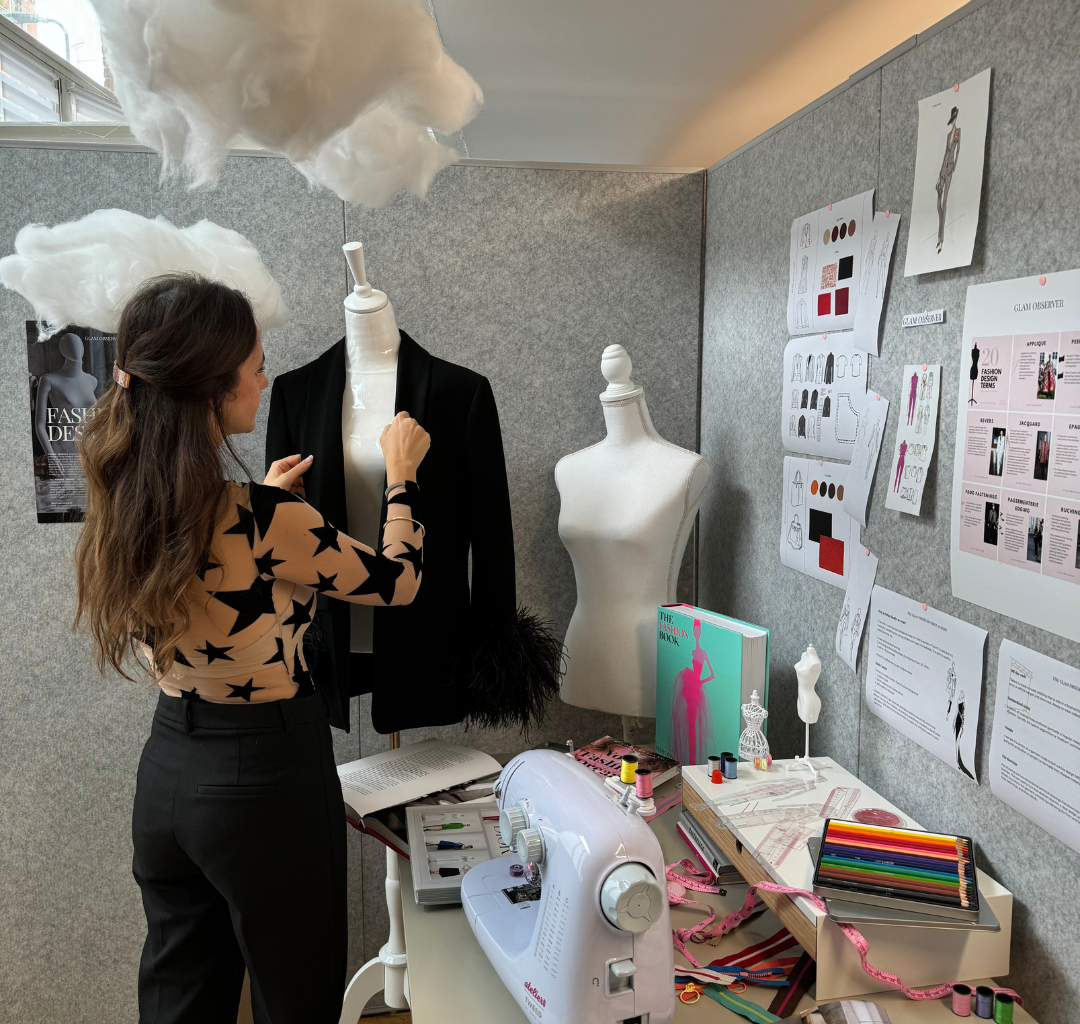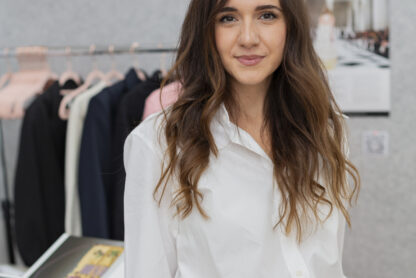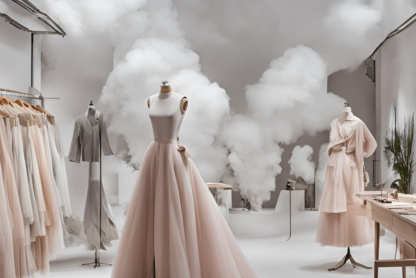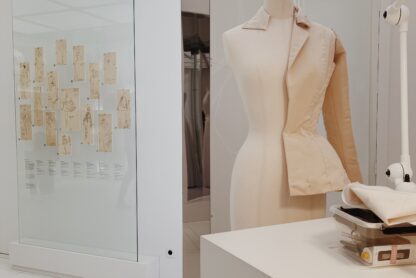When you admire a perfectly tailored Saint Laurent blazer or a luxurious silk dress, it’s easy to overlook the intricate process behind its creation. Producing luxury fashion is a complex, multi-step journey involving a team of experts, skilled artisans, and the finest materials. In this article, I wanted to share with you the steps of collection production at a luxury fashion house. Understanding the fundamentals of fashion production is essential for anyone pursuing a career in the industry, not just those focused on design or production. Whether your interests lie in fashion marketing, PR, or another area, having insight into these processes will be part of your foundational knowledge. In fact, your future employer will likely introduce these steps during your initial days on the job.
The Steps of Luxury Production: How a Fashion Collection Comes to Life
For this exploration, I will use Saint Laurent as a case study. While the production process is more intricate than the overview provided here, I hope to offer you a digestible glimpse into the journey of creating luxury fashion.
1. Concept Development
The first step in the production process is concept development, where the creative vision for the collection takes shape. Anthony Vaccarello, who has been Saint Laurent’s creative director since 2016, is responsible for defining the overarching themes and mood for each season’s collection. Whether drawing inspiration from music, art, historical references, or the brand’s iconic archives, Vaccarello seeks to craft a narrative that reflects both the heritage of Saint Laurent and his own modern, minimalist sensibilities.
During this stage, Vaccarello decides the overall vibe for the collection—whether it’s sharp, tailored power suits or fluid, draped dresses with a sensual edge. His vision blends the rock-and-roll spirit of the brand with his signature touch of sleek sensuality. It always retaining the bold, confident energy that defines Saint Laurent. This stage lays the foundation for the creative direction of the collection.
2. Research and Collection Grid Development
Following the initial concept, a thorough research phase begins. This involves delving into the extensive archives of Saint Laurent, where the history of the brand serves as a wellspring of inspiration. Vaccarello and his team study past collections. They also examine the silhouettes, fabrics, and details that have defined the brand over the decades.
This archival research not only informs the creative direction but also allows Vaccarello to reinterpret iconic pieces and elements, ensuring that each new collection resonates with the brand’s legacy while feeling fresh and contemporary. By weaving historical references into modern designs, the team creates a dialogue between past and present, showcasing the evolution of Saint Laurent’s aesthetic.
This is where Collection Merchandisers play a crucial role. They create the collection grid. They stablish guidelines for the upcoming line based on their analysis of market trends and sales data. Also, they determine the optimal mix of items, such as bags and skirts, ensuring the collection is commercially viable. While some pieces may serve as showstoppers, the majority are designed with a focus on sales potential. This approach effectively merges the creative vision with data-driven insights to maximize the collection’s success in the market.
3. Design
After the concept is finalized and research is conducted, the design process begins. Vaccarello and the whole design team at Saint Laurent work together to translate the collection’s vision into specific garments. Sketches are drawn for each piece, detailing everything from silhouette to embellishments. The sketches are then turned into technical drawings that provide precise specifications such as measurements, seam placements, and garment construction.
Distinction: Ready-to-Wear vs. Accessories, Bags, and Shoes
Ready-to-Wear Collections
The design process for ready-to-wear focuses on garments that are produced in standard sizes and sold in seasonally released collections. These pieces, ranging from dresses to suits, are designed for immediate wear, reflecting current fashion trends while ensuring accessibility for a broader audience. The emphasis is on creating a cohesive collection that aligns with the season’s theme.
Accessories
Accessories, including belts, scarves, and jewelry, are designed to complement ready-to-wear collections. While they share thematic elements, the design process for accessories often allows for more creative experimentation and innovation. Accessories are typically smaller in scale, often featuring intricate details or unique materials that enhance the overall collection.
Bags
The development of bags is a specialized process, as they require unique considerations related to functionality and style. Vaccarello collaborates closely with accessory designers to ensure that bags align with the season’s aesthetic while also serving practical purposes. This involves selecting materials, designing shapes, and incorporating features like pockets and closures, all while maintaining the brand’s luxurious appeal.
Shoes
Like bags, shoes are an essential aspect of a luxury collection that requires specialized craftsmanship. The design of footwear involves considerations of comfort, fit, and style. Each pair of shoes undergoes a rigorous development process. It includes prototypes and fittings, to ensure that they not only look stunning but are also comfortable and practical for wear.
4. Material Sourcing
Luxury fashion is defined by its use of premium materials. Saint Laurent sources the finest fabrics from leading suppliers in Italy and France. They select materials like fine wool, leather, silk, and cashmere. The leather used in Saint Laurent’s iconic jackets is chosen for its softness and durability, ensuring that each piece feels as luxurious as it looks.
The creative director is deeply involved in selecting materials that align with his vision for each collection, often opting for fabrics that emphasize the brand’s rock-and-roll edge.
5. Pattern Making
Once the designs are finalized, the technical drawings are handed over to pattern makers, who create patterns based on these specifications. Patterns are essentially the blueprint for each garment, outlining its shape and ensuring a perfect fit.
At a luxury brand such as Saint Laurent, this process requires precision and expertise, especially for the brand’s sharp-shouldered blazers and fitted jackets. Pattern makers use both traditional techniques and modern technologies to create toiles (mock-up garments). This is to test the fit before cutting into luxury fabrics. Adjustments are made to perfect the proportions and structure of each garment.
6. Cutting and Assembly
Once the patterns are perfected, the fabrics are cut according to the pattern specifications. For Saint Laurent, where high-quality craftsmanship is a hallmark, much of this cutting is done manually by skilled artisans, particularly when working with delicate or expensive fabrics like silk or leather.
After cutting, the garment pieces are assembled by expert seamstresses. At Saint Laurent, the assembly process is largely done by hand in ateliers. This process ensures that each garment meets the brand’s rigorous quality standards. Whether it’s hand-stitching hems or sewing on embellishments, the craftsmanship involved in this stage is what distinguishes luxury fashion from mass-produced garments.
7. Finishing Touches
The finishing stage includes adding elements like buttons, zippers, and linings, as well as any additional hand-sewn details such as studs or embroidery. For Saint Laurent, this attention to detail is paramount, as it gives each piece its unique luxury appeal.
Vaccarello’s designs often have a minimalist aesthetic, but the precision in construction and finishing ensures that even the simplest garment exudes a sense of luxury and refinement. The final touches, such as pressing or applying special treatments to fabrics, are done meticulously to ensure the garment’s impeccable presentation.
8. Fittings and Adjustments
After the garment is assembled, it goes through fittings to ensure it looks and fits perfectly. Each piece is fitted on models or mannequins, and adjustments are made if necessary. In the world of luxury fashion, where precision is everything, a garment must be flawless in both appearance and fit.
For Anthony Vaccarello, who is known for his sharp tailoring and sleek designs, ensuring that the clothes maintain the right silhouette and movement is crucial. Garments are adjusted until they meet his exacting standards.
9. Production and Manufacturing
Once the designs are finalized, the garments are produced in small batches in ateliers, mostly located in France and Italy. These ateliers employ artisans with decades of experience in high-end fashion production.
Some aspects of manufacturing use modern machinery. However, many parts of the production process are still done by hand, especially when working with intricate fabrics or techniques. This artisanal approach ensures that each piece of clothing meets the high standards of craftsmanship expected from a luxury house like Saint Laurent.
10. Distribution
After production is completed, the garments go through strict quality control to ensure they meet the brand’s luxury standards. The finished products are then distributed to Saint Laurent boutiques and department stores.
Saint Laurent carefully controls every aspect of the distribution process to maintain its brand image. This also ensures that each garment is delivered in perfect condition, whether it’s in Paris, New York, or Tokyo.
Producing luxury fashion, such as Saint Laurent, is a meticulous and labor-intensive process. From conceptualizing the collection to crafting the final garment, each step is carried out with precision, artistry, and an unwavering commitment to quality. This attention to detail is what makes luxury fashion not just a product but an experience—every Saint Laurent piece is a work of art, crafted with passion and expertise, and designed to stand the test of time. By distinguishing between ready-to-wear collections, accessories, bags, and shoes, we see the unique considerations and craftsmanship that go into each category, further enhancing the allure of luxury fashion.
I hope this article has helped you learn something new about the production phases of luxury collections so that when you look at a garment in-store or during a runway you know what’s behind this.
Follow us on Instagram!








